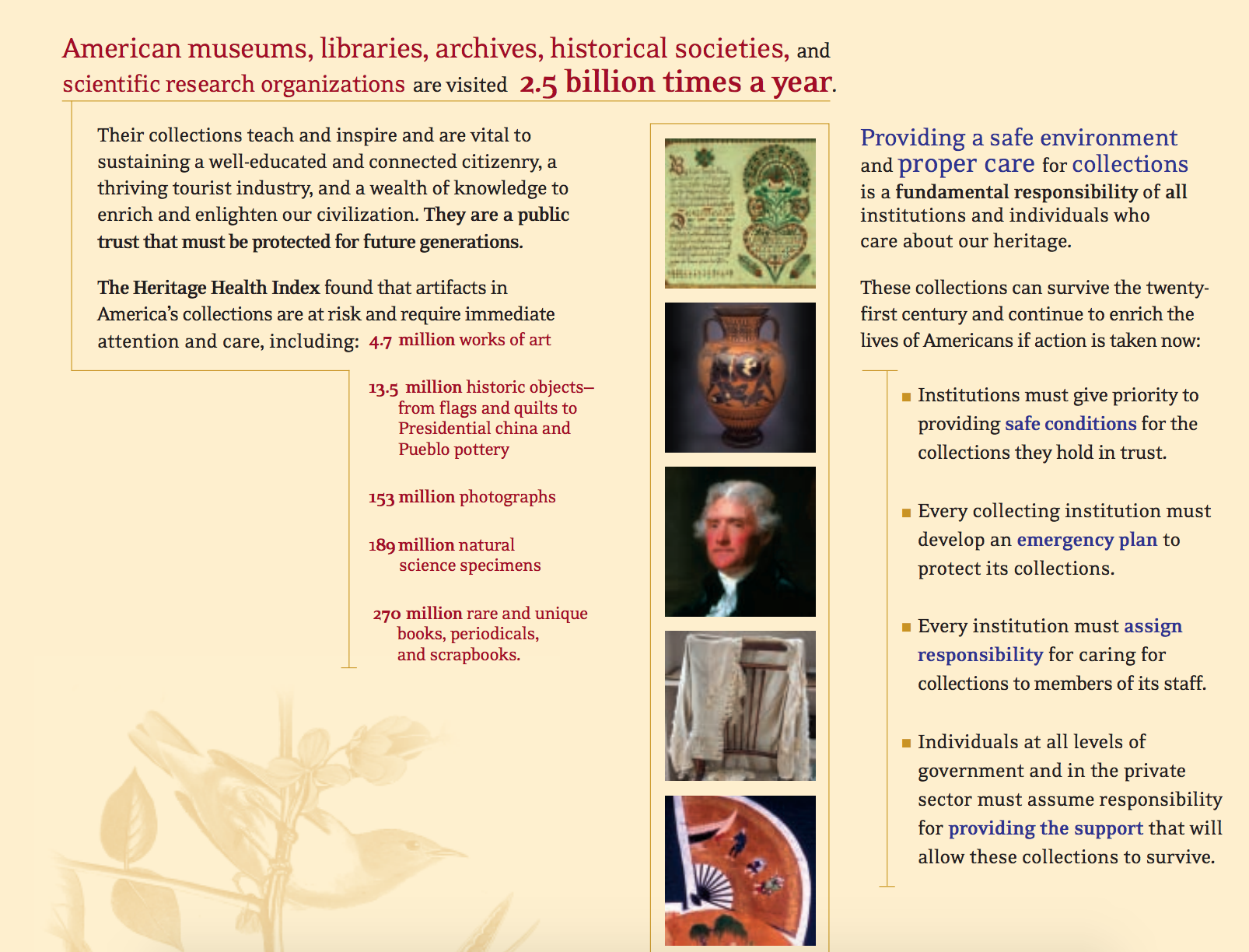Artifacts and Collections Preservation
Throughout the semester, the @PhillyHistory team has focused on the general health of Philadelphia’s cultural ecosystem and ways to improve nonprofit management. We have discussed how institutions can best allocate their resources to maximize efficiency and improve the overall well-being of the cultural economy, but today’s reading highlighted the physical health of America’s cultural collections.
The 2005 Heritage Health Index Report on the State of America’s Collections paints a bleak picture. According to the report, “4.8 billion artifacts are held in public trust by more than 30,000 archives, historical societies, libraries, museums, scientific research collections, and archeological research collections in the United States.” The majority of these institutions, however, are ill-equipped to properly care for the artifacts and this threatens the lasting survival of America’s cultural identity and heritage.
The report suggests various factors threaten the survival of artifacts including…
- Lack of staff for conservation and/or preservation
- No emergency plans
- Perilous storage conditions
- Insufficient security measures
- No environmental controls
Since the report’s publication, digitization efforts have been one of the most effective strategies for substantial preservation. Institutions are increasingly digitizing their collections to minimize physical handling, but digital collections represent only a small fraction of archival materials. Additionally, digital scans, models, objects, etc. lack authenticity and change our perception of the original artifact. Digitization should only be considered a strategy and not the solution.
 Heritage Health Index Report on the State of America’s Collections, 2005, pg. 1.
Heritage Health Index Report on the State of America’s Collections, 2005, pg. 1.
Rather, the 2005 report lists various steps institutions can take to protect their collections like developing an emergency plan, providing safe conditions, and hiring additional staff strictly for preservation. All these suggestions, however, require additional funding and a create catch-22 situation.
In order to properly protect their collections, institutions must allocate funds for preservation. In order to have enough funds for preservation, institutions must make their collections accessible to the public and risk their security.
100% of the SBD rewards from this #explore1918 post will support the Philadelphia History Initiative @phillyhistory. This crypto-experiment conducted by graduate courses at Temple University's Center for Public History and MLA Program, is exploring history and empowering education. Click here to learn more.
I wonder if there are stats on the impact of digitization on the handling of original materials. I mean, it could go either way...